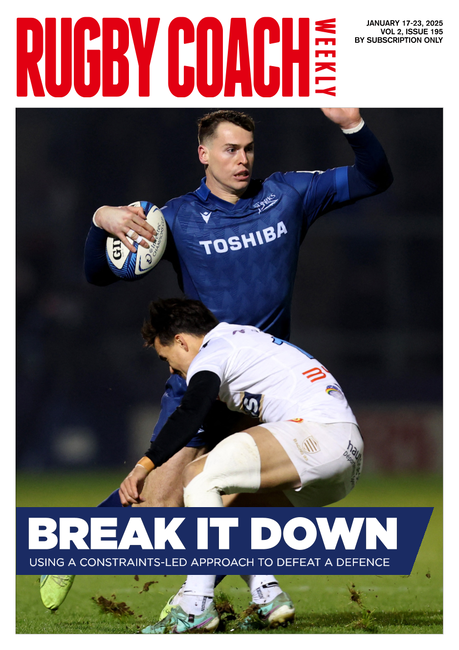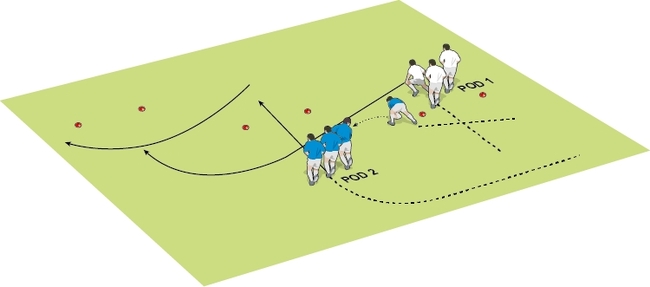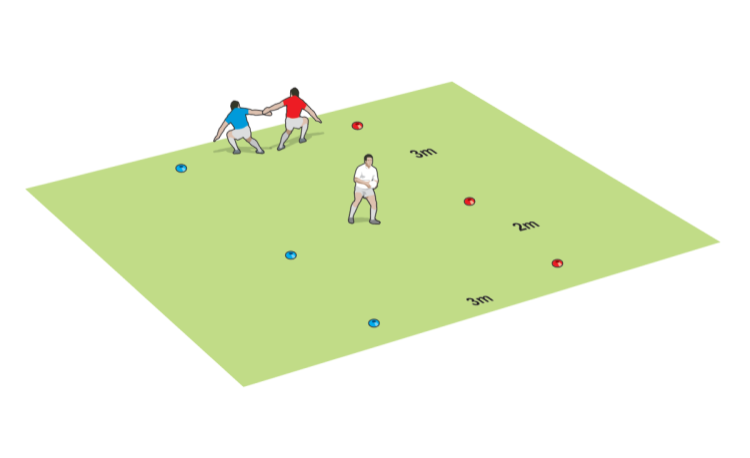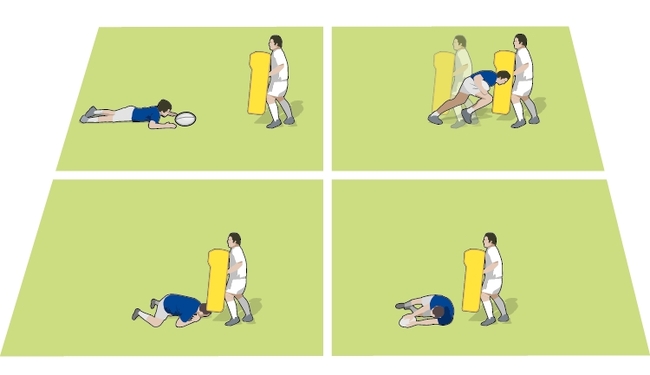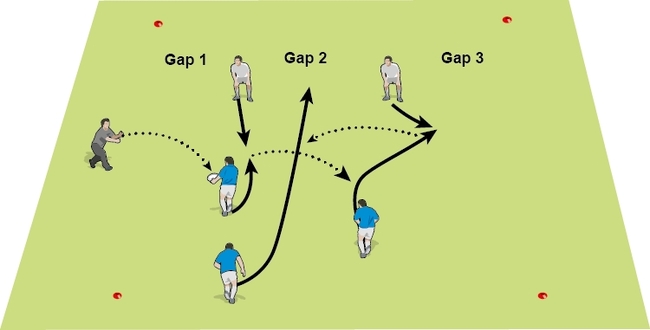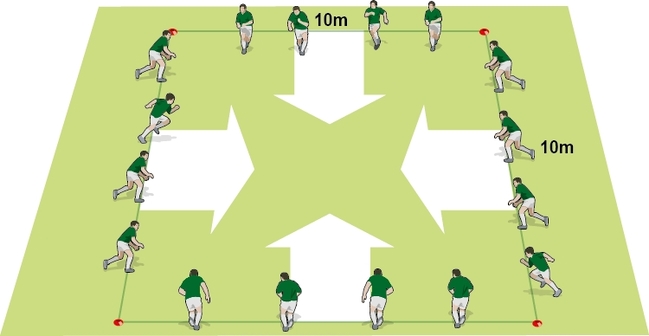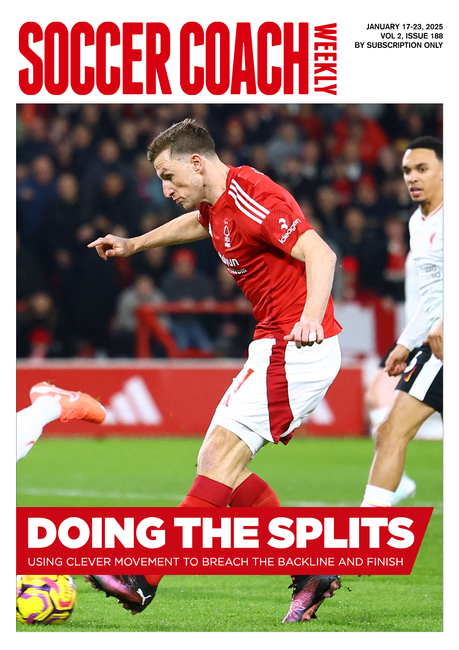The pros and cons of ball placement
Drillsby Alister Fulton
Ball-retention post-contact is essential to your team’s continuity, so here we take a look at the pros and cons of some of the most common techniques.
Encourage your players to think about which ball placement technique should be used when. When coaching within game-play, question players on the effectiveness of their chosen ball presentation and its impact on subsequent phases of play.
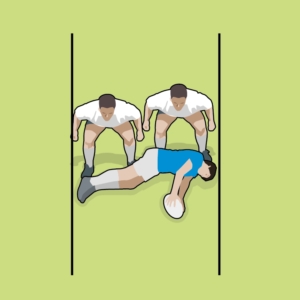
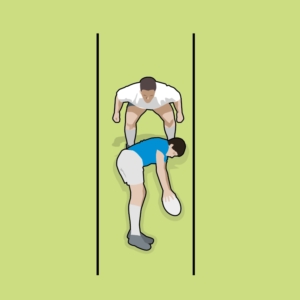
Cons: The distance between the contesting player at the ruck and the ball is probably at its shortest with this technique (the depth of the body, plus the length of the arms). It also creates the largest “gate” for contesting opponents to enter the ruck through (where ruck numbers are not limited) if the player doesn’t fully jack-knife.
What to look for: A strong push from the core to project the ball as far away from the body as possible. Whilst holding on to the ball is not allowable, retaining control of the ball with the placing hand(s) is essential.

Cons: Some tackles make this technique very hard to execute. The player with the ball needs to have most of their body free to be able to re-position and project their body away. Also, with a limited “gate” you need to be sure to avoid one-on-one mismatches at the breakdown.
What to look for: Virtually an instant execution to avoid supporting players from both sides smothering movement. Again, strong movement from the hips and core are essential.
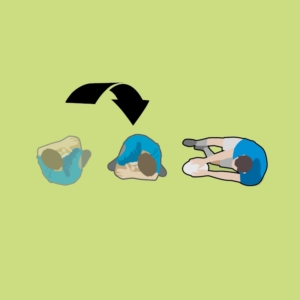
Cons: Positionally, this technique shares some of the downsides of the Jack-knife. This position is only really possible if not held in the tackle and must be executed immediately. Failure to complete the roll and then placement can result in either not making the ball available or indeed, making it very vulnerable to the opposition trying to steal the ball.
What to look for: Immediate execution using legs and core to create a strong roll. Stick to one roll then strong placement of the ball towards your own team.
Encourage your players to think about which ball placement technique should be used when. When coaching within game-play, question players on the effectiveness of their chosen ball presentation and its impact on subsequent phases of play.
THE JACK-KNIFE

- A wide tackle gate allows more access to the ball.
- The tackled player projects the ball back to his try line.

- If the tacked player can twist his feet back towards his own try line, then he can make the gate narrower.
Cons: The distance between the contesting player at the ruck and the ball is probably at its shortest with this technique (the depth of the body, plus the length of the arms). It also creates the largest “gate” for contesting opponents to enter the ruck through (where ruck numbers are not limited) if the player doesn’t fully jack-knife.
What to look for: A strong push from the core to project the ball as far away from the body as possible. Whilst holding on to the ball is not allowable, retaining control of the ball with the placing hand(s) is essential.
THE PENCIL/LONG & STRONG

- Place the ball back towards the try line, with the feet towards the opponents’ try line.
- A narrow gate with the ball a long way from the defender.
Cons: Some tackles make this technique very hard to execute. The player with the ball needs to have most of their body free to be able to re-position and project their body away. Also, with a limited “gate” you need to be sure to avoid one-on-one mismatches at the breakdown.
What to look for: Virtually an instant execution to avoid supporting players from both sides smothering movement. Again, strong movement from the hips and core are essential.
ROLL AND PLACE

- As the tackled player goes to ground, he rolls over once.
- He then places the ball back using a jack-knife or pencil placement
Cons: Positionally, this technique shares some of the downsides of the Jack-knife. This position is only really possible if not held in the tackle and must be executed immediately. Failure to complete the roll and then placement can result in either not making the ball available or indeed, making it very vulnerable to the opposition trying to steal the ball.
What to look for: Immediate execution using legs and core to create a strong roll. Stick to one roll then strong placement of the ball towards your own team.
Related Files
Vol-1-Issue-415-A-Fulton-the-pros-and-cons-of-ball-placement.pdfPDF, 165 KB
Newsletter Sign Up
Coaches Testimonials

Gerald Kearney, Downtown Las Vegas Soccer Club

Paul Butler, Florida, USA

Rick Shields, Springboro, USA

Tony Green, Pierrefonds Titans, Quebec, Canada
Subscribe Today
Be a more effective, more successful rugby coach
In a recent survey 89% of subscribers said Rugby Coach Weekly makes them more confident, 91% said Rugby Coach Weekly makes them a more effective coach and 93% said Rugby Coach Weekly makes them more inspired.
Get Weekly Inspiration
All the latest techniques and approaches
Rugby Coach Weekly offers proven and easy to use rugby drills, coaching sessions, practice plans, small-sided games, warm-ups, training tips and advice.
We've been at the cutting edge of rugby coaching since we launched in 2005, creating resources for the grassroots youth coach, following best practice from around the world and insights from the professional game.

